Skateboarding: instructions for use

Everyone loves skateboarding, that timeless skateboard with its avant-garde, fun and rebellious image but do you really know this sport?
Description & history
Skateboarding is about to enter the Olympic Games (Tokyo 2020) but do you really know everything about this urban sport? Here is some information about these asphalt surfers. It is not just a vulgar wooden board with four wheels. Skateboarding has reinvented itself with each generation, always one step ahead of its time. Contrary to what one might think, it is more a means of expression than a means of transport. A recreational and artistic mode of movement that was born in the 1930s in the USA, initially with handlebars mounted on a shaft to steer it, a bit like a scooter. Then the "roll-surf" appeared in the 50's in California thanks to surfers who wanted to find sensations similar to surfing when there were no waves or to move around. The first revolution dates from 1973 with the appearance of urethane (plastic) wheels which absorb shocks and allow more speed and comfort. Another turning point in the history of skateboarding came during the drought of 1976. In California, the pools were emptied due to lack of water and the inhabitants of these more or less luxurious houses had deserted the area due to the heat. Skateboarders found the pools a great place to play with their boards and the sport exploded as a result of this new trend. And then with the advent of the "ollie" where you lift the skateboard off the ground without a springboard, the craziest tricks came along and this urban board sport was democratised all over the world. In the 80's and 90's, the second wave of skateboarding was phenomenal and worldwide. Skateboarding finally freed itself from its surfing roots and became self-taught and self-governing, making it a sport in its own right and seducing young people. A modern activity that can be practised in the street or on specific modules (skatepark) and that has never ceased to renew itself and influence culture and many fields that have nothing to do with sport, such as fashion, music, video games, art or even cinema. Today skateboarding follows its own path, guided by freedom and followed by the whole world.
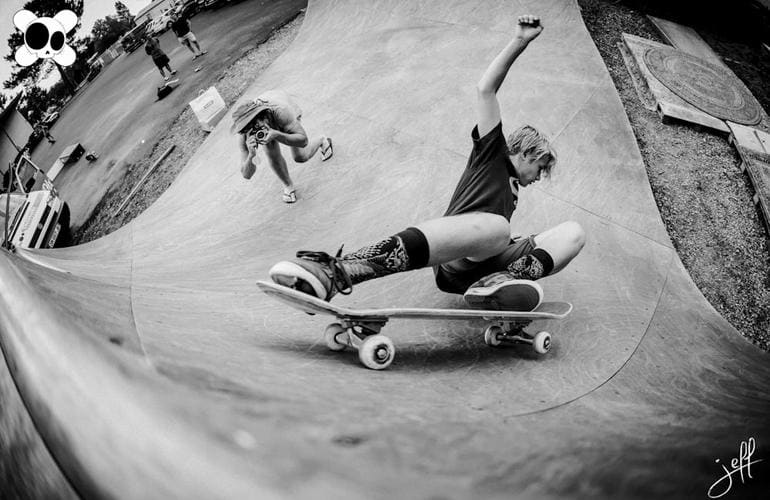
Equipment & structures
Freestyle skateboarding can be practised on flat ground but also on structures more or less designed for this sport. As its name indicates, the skatepark is intended to accommodate riders for the practice of skateboarding (and other urban sports such as bmx, rollerblading and scootering) with modules perfectly adapted to this activity.
Among these artificial constructions, we can find: a fun box, a wall, an inclined plane, a volcano, a mini-ramp, a ledge, a micro, a quarter, a spine, a rail, bumps or a snake. Different modules that allow you to ride with different sensations. But you can also skate in the street and it's the other way around because it's up to the riders to adapt to the terrain (the street furniture) and not the other way around. Even if street skating is rarely allowed because it is considered as vandalism, riders often ride on benches, stair sets, stair railings, house roofs, sloping walls and a lot of other things that can become a potential playground for skaters. Among the possible riding areas, there is also the famous bowl (or pools), which is often inspired by the empty swimming pools that remind the origins of the sport.
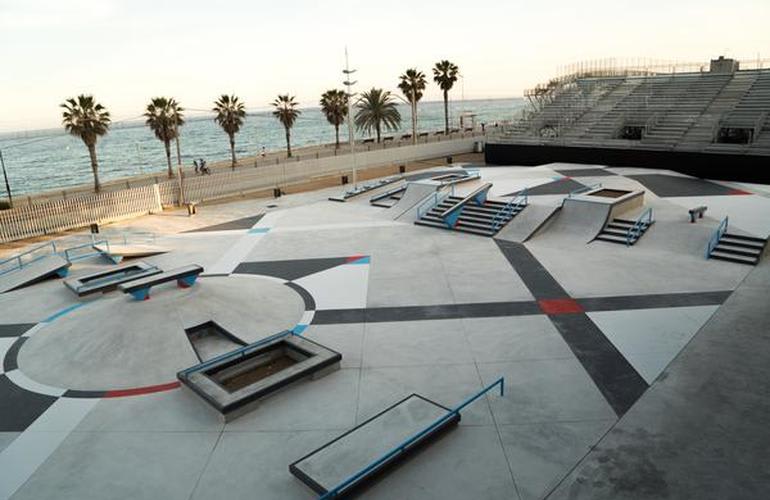
Derivatives and disciplines
- Slalom: probably the oldest discipline of DH skateboarding as it appeared in the 60s. The concept is simple, you have to go around the poles or cones on the ground and go as fast as possible. Originally the boards were short and narrow, mainly made of plastic, but nowadays they are wider and sharper (aerodynamic).
- Freestyle: the best known discipline which includes street and skatepark. We can also add bowl in this category. The discipline of the big still exists even if it is almost no longer practiced. On a 4 meter long mega-ramp that ends vertically, riders used to send high-flying tricks but it is still a very dangerous practice and therefore a bit abandoned by skateboarders. Tony Hawk or Bob Burnquist are very good ambassadors and still preserve the spirit of the big. As for the flat discipline, it has disappeared since the 90's and it's a pity (tricks on a flat ground like a headstand on the board while rolling or bounces for example). Longboard dancing has gradually replaced this discipline.
- Longboard downhill: extreme downhill skateboarding. The most adrenaline-filled discipline without a doubt. It consists of riding on steep roads (mountain passes for example) with often very tight turns. Sometimes going more than 100 km/h, these intrepid riders are not afraid of the eyes because they sometimes ride down a road that is "open" to traffic with cars coming in the wrong direction! Despite what one might think, there are very few accidents in DH longboarding because the riders are very experienced and trained people who will only face a dangerous road with protection and a full face helmet. Let's not forget that a skateboard has no brake, so to slow down or stop, you have to "slider", i.e. put the board across to brake. The equipment is also adapted to these crazy races with thicker wheels and boards.
- Carver: named after the Californian brand, this practice is associated with surfing because it has the same movements and the same spirit. The board is characterised by its pivoting front truck which allows you to "carve", i.e. you can relaunch yourself and pick up speed by pumping and without putting your foot on the ground. The aim is to find the sensation of riding a wave but in an urban environment. This "surfskate" is wider with big wheels to be able to stick to the pavement and lean the board to the maximum. It is now possible to progress in surfing even when there are no waves with this original skateboard concept.
- Dancing: Inspired by surfing's lonboard, dancing consists of creating tricks while staying on the board and on a flat ground. A "dance" on the skateboard by performing tricks on oneself or balancing on a single wheel. Also called "sidewalking", this practice is as artistic as it is athletic. With a longer and more flexible board to be able to perform tricks and move on it. A spectacular discipline that has evolved considerably in recent years throughout the world.
- Cruiser: the big comeback of the small plastic boards from the 60s. These little old school skateboards have made a huge comeback in the last few years and are only used for walking or as a means of transport. All the spirit of California with windy hair is present in this urban practice. There are now several board sizes and materials but the main advantage is that it is easy to transport. The goal of this discipline is to have style and class while sliding in the streets and that's the most important!
- Others: the electric skateboard, the moutainboard, the snakeboard... there are derivatives of skateboarding that are born every day and many hybrid machines that try to make a place for themselves in the board sports disciplines. With more or less success, some of them are developing well but remain sometimes far from the original spirit of skateboarding even if they have a wooden board and 4 wheels.
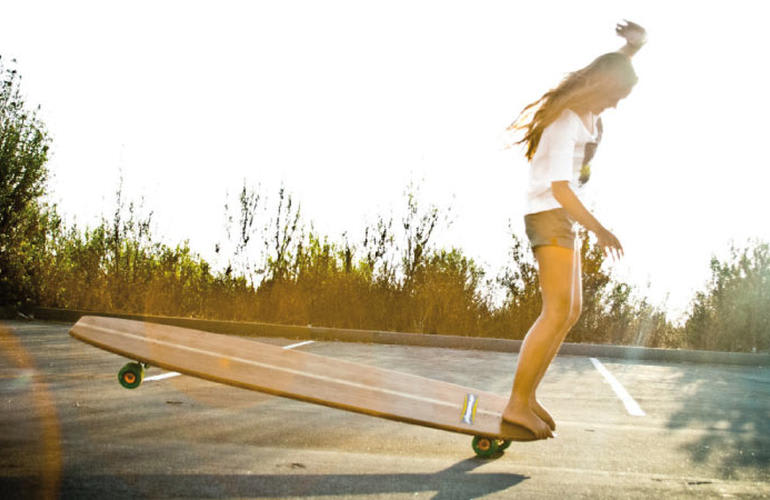
Tips for beginners
It is important not to skip any steps and there are now many skateboard clubs that offer lessons from the age of 4 or 5. The aim is to get the right reflexes as early as possible and to work on your balance. Taking a lesson in a skateboard club will teach you how to fall without hurting yourself and how to get up to face new challenges and push your limits. Knowing how to manage and deal with risk is a real asset in life. It is important to choose the right board first. A board that matches your size and discipline will obviously make you progress faster. In general, skate shops have salesmen who know their field well, so avoid the big stores for bad advice and end up with a Carver to ride downhill in the mountains! It will be necessary to determine if you are goofy or regular (which foot goes in front and which one goes behind) and then to position yourself well on the board. Some people are more comfortable with the axles loose, so test all the options before you go. The teachers will teach you the right techniques to have better control and confidence.

The differences in level
What type of lesson should you take depending on your level? Here are some ideas of what you can learn in the first few lessons, which can vary according to the instructor and the speed of the student's progress.
Beginner: 1st day on a skateboard - Information on the protections and presentation of the different modules of the skatepark - Determine if you are goofy or regular (left or right handed) - Learn the basics of balance and body positioning on the board. Learn the basics of balance and body positioning on the board, with feet perpendicular to the board and placed at the level of the clamping screws, knees bent, chest towards the step and shoulders forward. - Know how to stand on the board and get on it. Know how to skate and put the second foot in the right place. Know how to brake and stop - Know how to make left and right turns with the right posture
Amateur: - A few exercises such as jumping on the board with the skateboard upside down and a slalom session for those who already know how to balance. - First drop from a small ramp, first accompanied by the instructor and then alone. - Knowing how to back up on the board and change feet on the board while riding. - Learning the basics of the ollie (jump without a springboard). - The basics of the 180 (half-turn) on a curve by turning on the back wheels.
Advanced: - Master the first ollies and variants (nollie, switch...) - Descend the big modules and first jumps on the fun box - Pass the first grinds and slides - Start to learn the kick-flip - Learn the manual and nose manual
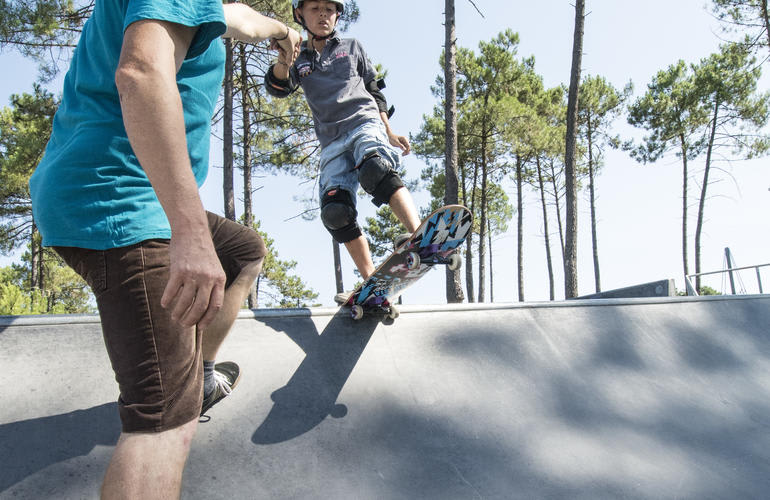
Safety rules
It is important not to neglect wearing protective gear: knee pads, elbow pads, wrist guards and helmets are the minimum. Protecting joints such as ankles and wrists is essential if you want to ride for a long time. And don't hesitate to buy skate shoes (Vans, Etnies, DC, Globe...) that are flat and reinforced or at least trainers but no need to come to the skatepark in flip-flops or moccasins.
It is also necessary to respect the rules of priority in the skateparks; wait until the rider has finished his figure before launching yourself and look carefully around you if another rider is not already launched on the module in order to avoid collisions. Skateboarding can be practiced from the age of 4 years and there is no maximum age (and it is not Neal Unger who will say the opposite). And by the way, the late Jay Adams was not a wise man, but he once said "You don't stop skateboarding because you're too old, but you become old when you stop skating"... Concerning insurance, you can also read our dedicated article on this subject, but it is important to check if you are well insured for this practice. When you take a course with a club, you are automatically covered by the insurance of the association or company that organises it, so there is no need to worry about this.
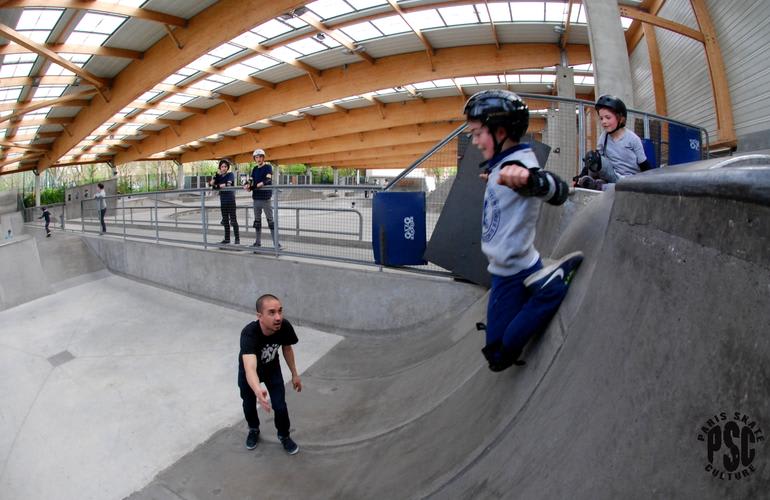
The best spots
Skateboarding has grown incredibly around the world. Wherever you can find asphalt, street furniture or a curve, you can potentially find skaters. Skateparks have sprung up like mushrooms in the last 20 years all over the world, so we can't list them all here. As for the legendary spots, we can talk about Barcelona in Spain, the mythical Southbank in London or the famous Trocadero in Paris, but it's impossible to list them all. In France, Bordeaux was rightly elected "skateboard city" thanks to its skateparks but also its indoor complex of Darwin Ecosystem in addition to its numerous street spots in town. If you want to try longboard dancing, we advise you the Dock Session in Paris and if you have a big need for strong sensations, then try the famous downhill descent of the Col de l'Espigoulier (located on the commune of Gémenos) . And speaking of Marseille, its famous Prado bowl is also unmissable and renowned worldwide. If you are passing throughSouth Africa then don't miss the Indigo Skate Camp located in the Valley of a Thousand Hills about an hour from Durban. In this small village called Isithumba, the locals will make you share an unforgettable session on their big ramp and the skatepark of the corner. And if you go to India, make a diversion by the small village of Janwaar in the state of Madhya Pradesh which is in the middle of a project of rural social development with as a central objective, skateboarding and its superb skatepark opened to all. In the USA, Woodward camp remains the world reference with several complete skateparks and all that it is necessary to think of only to ride and to progress. It's up to you!
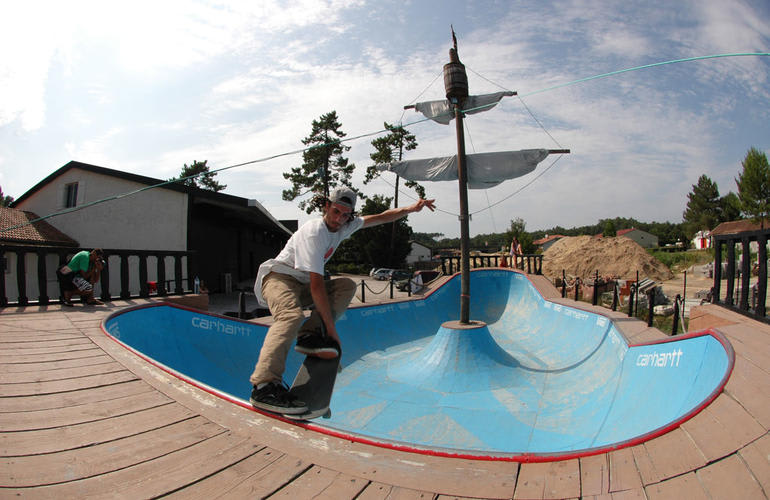
Top photo: Kevin Metallier © Red Bull content pool